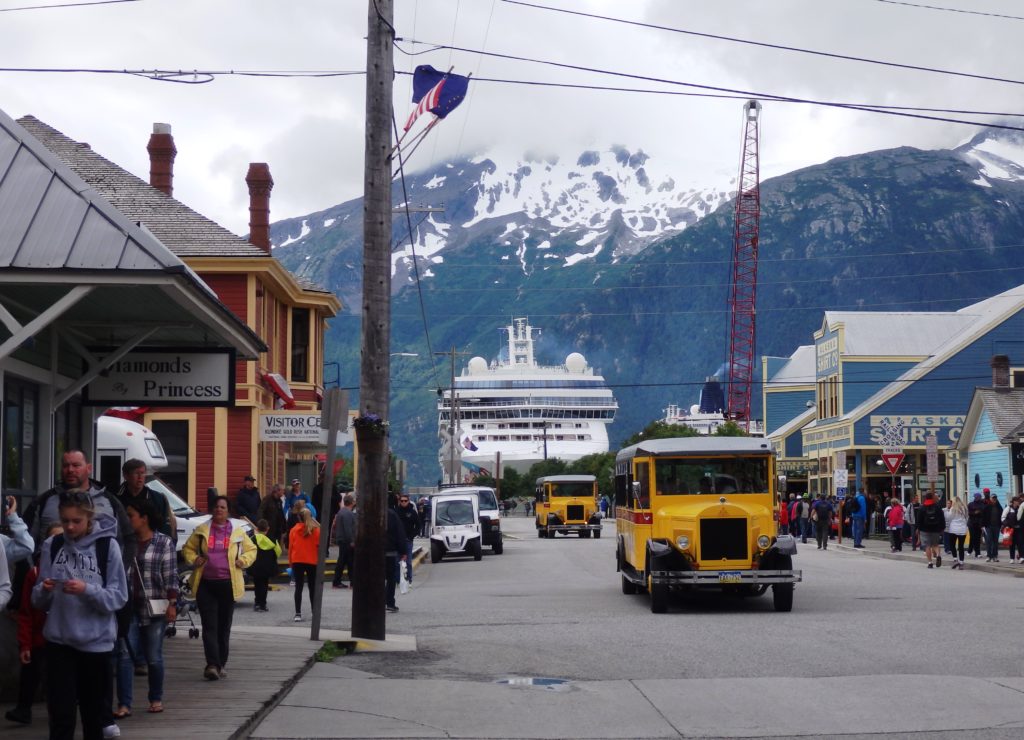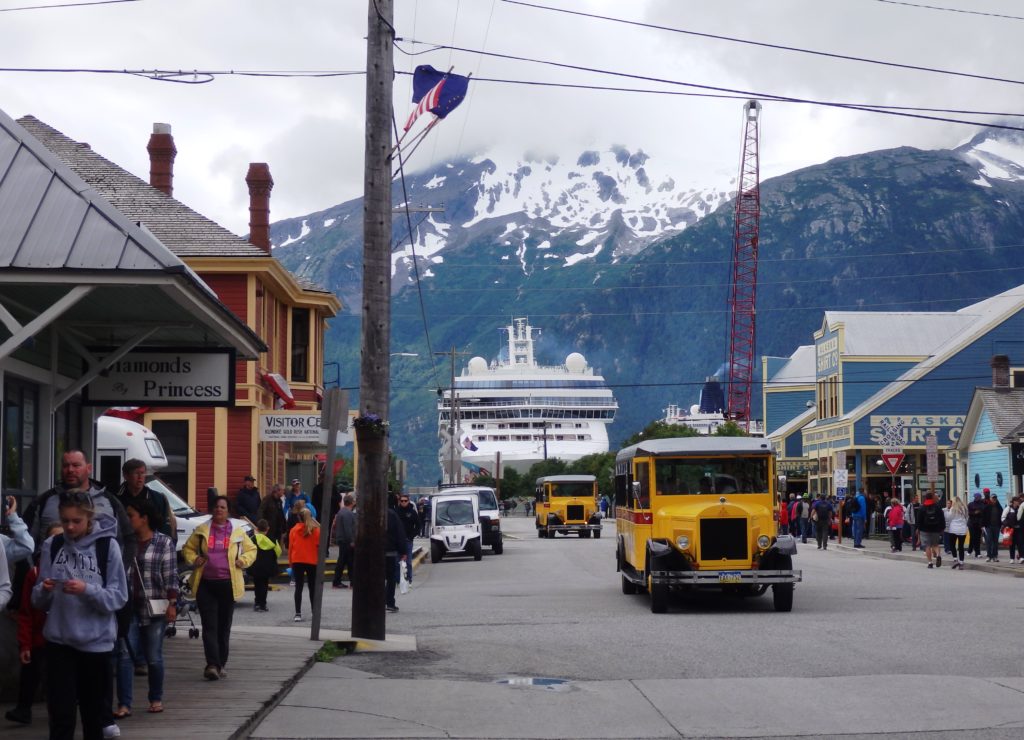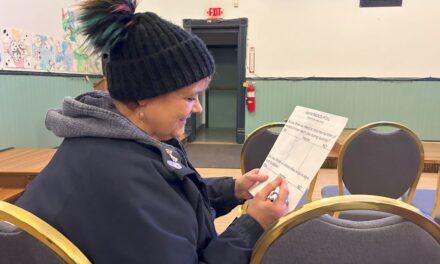
Skagway’s Broadway Street on a busy cruise ship day. (Emily Files)
Tourists visiting Skagway can also take a trip just outside of town to Dyea. Local companies and the Klondike Gold Rush National Historical Park offer activities in the area. And, the popular Chilkoot Trail starts in Dyea. The Park Service and local stakeholders are looking into whether public transportation should be expanded between Skagway and Dyea.
Dyea is an old Gold Rush-era town that has since been mostly abandoned. It’s on the outskirts of Skagway and lies within the Klondike Park.
Park superintendent Mike Tranel says they offer regular tours of the old town site.
“There’s lots of interest in spending time out there and it’s, of course, a very different experience from Skagway,” says Tranel. “So people like it in that regard, too. It’s just something different. Kind of, get away from the crowds opportunity.”
And, he says hikers are often looking for a ride to the start of the Chilkoot Trail.
“With the hikers starting out there, there’s a regular demand for people to get out there most mornings during the week,” says Tranel.
The 33-mile trail is typically a one-way trip. Hikers will often take the White Pass and Yukon Route Railroad back to town.
Right now to get to Dyea you can either drive yourself, hop on a tour with a local company, or take the Dyea-Chilkoot Trail transport, a private shuttle service.
“So that’s how people get out there now,” says Tranel. “So that’s working very well. So one of the questions is do you meet the need just by expanding that type of service or is there a need for something like the smart bus? So those are all the questions that the study is looking at.”
Tranel says the conversation about expanding transportation options started about three years ago. He says at that time there was a discussion about the SMART Bus expanding service to Dyea.
“So that idea had been discussed. And then the National Park Service was interested in having regular service, scheduled and with a published fare so that a visitor could come into the visitor center and ask about ‘how do I get to Dyea?’ and we could refer them to one provider,” says Tranel.
He says Parks has access to federal transportation funding. And that’s where the feasibility study comes in. They’re trying to figure out what the level of demand is.
“And to attempt to provide some additional ideas about how low-cost public transportation could be provided to growing numbers of visitors going out to Dyea,” says Tranel.
The Park is contracting with the Volpe National Transportation Systems Center to complete the feasibility study. They’ve been working with the park to gather input from stakeholders.
They held and attended a couple of meetings at the beginning of August.
Tranel says it’s important to point out that the idea is still in the exploratory phase.
“It’s very important to emphasize that it’s a feasibility study so just determining whether public transportation, additional public transportation is feasible or not,” says Tranel. “And if it is feasible, provide some ideas on how it can be provided. It’s not implementing anything or proposing a specific type of transportation that we’re required to provide or anything like that. It’s just a recommendation on whether or not it’s feasible.”
He says the study could determine it’s not feasible at all. The study is expected to be completed in Spring 2018.









